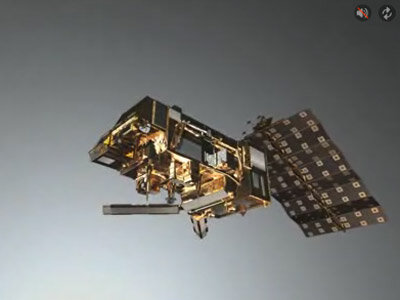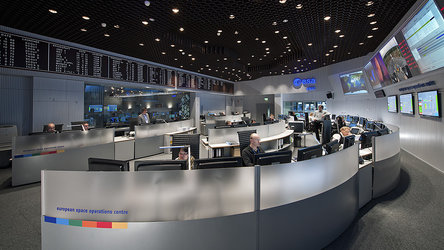Peter Edwards – ESA MetOp Project Manager
In our continuing series of interviews with key members of the MetOp team, we spoke with ESA’s MetOp Project Manager, Peter Edwards. Check back for further interviews, as well as updates on the MetOp mission.
What is involved in being the ESA MetOp Project Manager?
Any Project Manager has to satisfy the simple rule: ‘in time, in cost and in specification’. But an ESA project manager has to satisfy some other constraints, some related to the political conditions needed to win approval of the programme in the first place, and some related to the realities of the programme versus the initial expectations. For MetOp, you have to add some other factors: recognition of the rights of partner agencies and their political imperatives, for example. And then you must ensure that the project team is well motivated, that industry feels fairly treated, that the reporting is satisfactory and that money is spent on-time.
The series of MetOp satellites has come about through cooperation with the European Organisation for the Exploitation of Meteorological Satellites (EUMETSAT). What has this meant for the two organisations?
For EUMETSAT, MetOp-EPS is a very big step, more-or-less doubling their business in terms of budget, spacecraft and data products. It makes a further step towards equality in partnership, for operational meteorology, with the U.S. For ESA, MetOp represents a certain continuation of the ERS and Envisat series of Earth observation satellites, and as well a continuation of the very important working-together with EUMETSAT which started on Meteosat. It represents a very good example of an Earthwatch programme as defined in ESA’s Living Planet programme. However, in budget terms, MetOp is large but not an enormous project in ESA context.

Could you describe briefly the role of each agency in the construction of MetOp-A and once MetOp-A has been successfully launched and placed in its orbit?
ESA provides the majority of the funding for the development of the MetOp-A satellite, and provides most of the personnel of a joint project team (joint with EUMETSAT) which manages the development of the first MetOp satellite. This team also oversees the procurement of MetOp-2 and MetOp-3 and provides support to the in-orbit commissioning and routine operations.
EUMETSAT provides the funding for the ‘operational’ sector of the programme, which is: the ground segment (development and operations), the launchers and the recurrent space segment. It also makes a financial contribution to the MetOp-A development. EUMETSAT is responsible for the overall system development and verification. After the initial early operations in-orbit (run by ESOC), EUMETSAT carries out all spacecraft operations and data acquisition, processing and distribution.
Will both ESA and EUMETSAT be involved in the other two MetOp satellites to be launched sequentially over the next 14 years?
Yes indeed. EUMETSAT will, in the frame of their operations department, carry out the routine operations of the three MetOp satelites. ESA will retain a skeleton team to ensure the correct storage of the unlaunched spacecraft, and then about two years before the launch, will deploy a reactivation team to prepare the replacement spacecraft for launch.

What have been the biggest challenges preparing for a mission that carries so many different instruments?
Technically, we have had some difficulties due to the differing heritage of instruments, which are mostly based on existing designs: this has meant problems in agreeing an interface definition, in adapting the designs or finding work-arounds which, in some cases, have cost a lot of money. Also, we have many powerful transmitters on board, and many sensitive receivers: making sure that these will be mutually compatible has been a challenge.
From a cost point of view, the delivery schedules of the instruments have been the most important issue, especially for those instruments provided as contributions by the partner agencies.
Where will you be for the launch?
At the Baikonur Space Centre, in the spacecraft control room.









